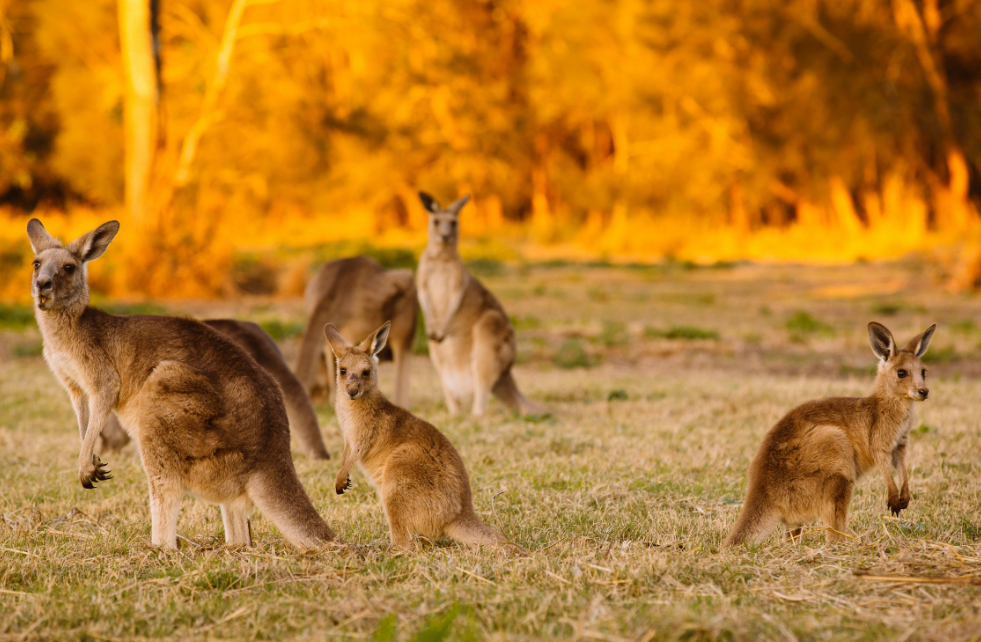
(Montaza Garden)
Also known as the "Egyptian Summer Palace", "Montaza Palace Garden", "Montaza Garden", "Farouk Summer Palace", etc., it is the last Egyptian king Farouk's residence, it is located in the eastern end of Alexandria in a vast scenic area (including a museum, several beaches and restaurants and well-equipped tourist center). The Palazzo Montaza is surrounded by gardens.
(Memphis with its cemeteries and pyramids)
Located on the west bank of the Nile River in northeastern Egypt, the Pyramid burial complex is located around Memphis, the capital of the ancient Kingdom of Egypt, mainly on the Giza plateau, which includes three pyramids, a large statue of the Sphinx, a number of cemeteries and temples, and is considered to be the only remaining building of the "seven wonders" of ancient times.
(The ancient Egyptian city of Thebes and its cemeteries)
The ancient city of Thebes, the medieval and New Kingdom capital of ancient Egypt, is dedicated to the god Amun. The temples and palaces of Kernak and Luxor, the Valley of the King's Mausoleum and the Valley of the Queen's Mausoleum are notable ruins. The city of Thebes is a historical witness to the high civilization of ancient Egypt.
(The Nubian ruins from Abu Simbel to Philae)
From Abu Simbel to this area there are a large number of archaeological sites of great interest, including the temple of Ramses II and the temple at Philae dedicated to the goddess ISIS. These magnificent ruins were almost destroyed by the rise of the Nile, but were saved thanks to an international rescue campaign launched by UNESCO between 1960 and 1980.
The Nubian archaeological site contains some of the most magnificent monuments in southern Egypt, such as the Temple of Ramses II at Abu Simbel and the holy site of ISIS on the island of Philae. The temple of Ramses II has become the most representative relic of ancient Egypt, the four 20-meter-high statues of Ramses II sitting giant outside the temple and the frescoes inside depicting his achievements in battle, everywhere reveal the breathtaking spirit of the pharaoh.
The most famous buildings in the Nubian ruins are the Temple, the Temple of the Queen and the Temple of Philae, and the Temple of Abu Simbel and the Temple of the Queen are the most magnificent buildings here.
(The Santa Catalina area)
The Orthodox monastery of Catalina sits at the foot of Mount Sinai, as recorded in the Christian Old Testament, where Moses is said to have received the Ten Commandments. This mountain was also known to Holy Muslims, who honored it as Jebel Musa (which means the mountain of Moses).
The area is sacred to all three of the world's major religions, including Christianity, Islam and Judaism. The monastery was founded in the 6th century AD and is the oldest monastery still in use in the world. The walls and houses of the monastery are of great significance in the study of Byzantine architecture, and there are many valuable early Christian manuscripts and ICONS in the various rooms of the monastery.
The monastery is located in an area with high mountains and numerous archaeological and religious monuments, providing the perfect setting for the monastery.
(Ethiopian plateau)
The Ethiopian Plateau in Ethiopia, East Africa, also known as the Abyssinian Plateau, is an average elevation of 2,500 to 3,000 meters, covered in ancient strata of vast basalt unwavy plateau. On the plateau stands a volcanic peak of more than 4,000 meters above sea level, which is very magnificent and magnificent, and is the highest terrain in Africa, known as the "roof" of Africa.
Covering an area of more than 800,000 square kilometers, it is an important agricultural area in Africa and the origin of coffee in the world. Also specialty teff, Nug (oil chrysanthemum), Kudzu, etc.(Tanatn)
Lake Tana, the birthplace of the Blue Nile and the largest lake in Ethiopia, is located in the northwest of the country at an altitude of 1840 meters (12 degrees 0 'N, 37 degrees 15' E), with a length of about 75 kilometers, a width of about 70 kilometers, and a deepest depth of 15 meters.
The water of Lake Tana is fed from RebRiver and GumaraRiver, and the lake area is generally 3,000 to 3,500 square kilometers, depending on the season and rainfall. The construction of a weir where Lake Tana flows out of the Blue Nile has controlled the water level of the lake and also regulated the flow of water into the TisAbay Falls and the hydroelectric power plant.
(Loch Chamo)
Lakes of southern Ethiopia. In the rift zone, between Lake Abaya and Lake Chou. It is a fault lake. The lake is 1,234 meters above sea level. It is 37 kilometers long, 22 kilometers wide and covers an area of 520 square kilometers.

